Looming nuclear catastrophe in Japan could cool Colorado uranium boom, Pueblo nuke plant plan
America's “nuclear power renaissance” – and a concurrent Colorado uranium mining revival -- could cool considerably in the wake of an 8.9 earthquake and tsunami off Japan's northeast coast Friday that has triggered the world's worst nuclear catastrophe since the Chernobyl meltdown in 1986.
The growing disaster plaguing four of Japan's 54 nuclear reactors – the third most in the world behind only the United States (104) and France (58) – has sparked vivid memories of the Chernobyl disaster in the Ukraine and the partial Three Mile Island meltdown in Pennsylvania in 1979. The mounting crisis in Japan -- where officials now fear radioactive fallout could reach the United States -- is sending shockwaves through the nuclear power industry.
Both Chernobyl and Three Mile Island contributed to a decades-long slowdown in nuclear power production in the United States, although the nation still generates 20 percent of its electrical power from nuclear facilities. America's 104 nuclear reactors are located in 31 states, mostly east of the Mississippi River, and none are in Colorado.
But Colorado historically has been a hotbed of uranium production dating back to World War II and the Cold War, and the state has slowly been ramping back up its uranium milling and mining operations to meet an anticipated spike in demand as nuclear power enjoys renewed interest because it doesn't generate nearly the carbon emissions of conventional fossil fuels.
There are currently 13 new nuclear facilities either in the planning stages or under construction in the United States, mostly in the South, and more than 65 new facilities are being planned or built worldwide. Questions about safety will undoubtedly surge back to the forefront after the Japan disaster, especially in more earthquake-prone states like California – home to four nuclear reactors.
In Colorado, the Pueblo County Commissioners tonight and Wednesday will hold hearings on a proposed clean energy park southeast of the city that a local attorney wants to see contain a 3,000-megawatt nuclear power plant.
That proposal, first floated in July, was sure to draw big crowds and heated debate both evenings beginning at 5 p.m. in the Jackson Ballroom of the Sangre de Cristo Arts & Conference Center, but in the wake of the looming Japanese disaster, the proposal will likely bring even greater scrutiny.
U.S. Rep. Edward Markey, D–Mass., on Saturday warned that a disaster such as the one unfolding in Japan could happen here in the United States and called for a moratorium on locating any new reactors in seismically active areas as well as tighter Nuclear Regulatory Commission regulation of containment technology for facilities in such areas. Pueblo and Colorado in general are not known as particularly earthquake-prone areas.
“As a result of this disaster, the world is now facing the looming threat of a possible nuclear meltdown at one of the damaged Japanese nuclear reactors,” Markey said Saturday. “I hope and pray that Japanese experts can successfully bring these reactors under control and avert a Chernobyl-style disaster that could release large amounts of radioactive materials into the environment.” Possible full-scale meltdown now threatens three active reactors in Japan.
Colorado Sen. Mark Udall, a Democrat, has previously introduced legislation to boost the nuclear power industry in the United States because he feels it's an essential part of the energy mix needed to reduce greenhouse gas emissions and slow global climate change.
“The scale of the energy changes we must make dictates that we be open to the widest variety of energy options, particularly those with domestic potential and those with cleaner emissions,” Udall said in a previous interview. “In other words, there is no silver bullet that can solve all of our energy challenges; we are going to need silver buckshot.”
But Udall knows the state must avoid the uranium mining mistakes of the past that left a toxic legacy for future generations, including several U.S. Environmental Protection Agency Superfund cleanup sites such as the Cotter Mill near Cañon City and Uravan in Montrose County. Colorado conservationists frequently decry what they call the “dirty front end” of the nuclear power business.
“You can't consider expanding nuclear power without uranium mining, but that does not mean supporting irresponsible mining,” Udall said. “It's important that the state — which is the delegated agency for permitting authority for uranium mining — ensures that uranium mining is done safely, responsibly and with the full input of the affected communities.”
Frank Filas, environmental manager for a U.S. subsidiary of Ontario-based Energy Fuels Inc., which has earned state approval for the first new uranium mill in the United States in more than 30 years, previously told The Colorado Independent he understands public trepidation given the uranium industry's checkered past.
“If you go back to the '40s and '50s and you look at our industry, well, we were doing a lot of things that weren't necessarily best for our people, but we didn't know any better — very similar to all the other industries at that time,” Filas said. “And when you had scares like Three Mile Island, and obviously Chernobyl was a horrible disaster, people see that and basically they wanted a safe supply.”
Environmental groups have sued the state and county to block Energy Fuels' proposed Piñon Ridge Uranium Mill in western Montrose County near the Colorado-Utah border. Opponents cite health concerns, safety issues and doubts about the company's ability to pay cleanup cost in the event of an environmental disaster.
In northern Colorado, conservation groups and landowners have been battling to mitigate the impacts of a proposed in-situ leach uranium mine 15 miles northeast of Fort Collins. That project recently had its U.S. Environmental Protection Agency permit pulled, although representatives of Powertech – another Canadian company – remain confident they'll ultimately win approval.
Udall also acknowledges there needs to be greater control over foreign uranium mining companies looking to exploit resources on public lands in the United States, where there is currently no royalty structure for hard-rocking mining such as the fees assessed the oil and gas industry.
In Pueblo, the county planning commission already signed off on the power plant plan, voting 5-3 to recommend zoning changes that would allow for the 40-square-mile energy park proposed by local attorney Don Banner and supported by Puebloans for Energizing Our Community LLC.
“The world needs energy,” Banner told the Pueblo Chieftain in July. “The United States is behind the eight ball when it comes to nuclear energy.”
Many conservationists say nuclear power is too pricey (Banner's plant could cost more than $5.5 billion) and consumes too much water in a mostly arid state like Colorado. Now they're likely to hammer even harder on safety concerns that have made the U.S. nuclear industry relatively dormant since Chernobyl.
The Heritage Foundation points out that the technology at the nuclear plant in trouble in Japan is older and far less efficient and safe than today's designs, but according to the NRC, there are 23 General Electric Mark 1 reactors like the Fukushima Daiichi Unit 1 that are currently operating in the United States.
Many Pueblo residents are already leery of power infrastructure projects like Xcel's Commanche 3 coal-fired power plant, feeling to some degree that they get all the impacts of such development and few of the benefits.
The growing disaster plaguing four of Japan's 54 nuclear reactors – the third most in the world behind only the United States (104) and France (58) – has sparked vivid memories of the Chernobyl disaster in the Ukraine and the partial Three Mile Island meltdown in Pennsylvania in 1979. The mounting crisis in Japan -- where officials now fear radioactive fallout could reach the United States -- is sending shockwaves through the nuclear power industry.
Both Chernobyl and Three Mile Island contributed to a decades-long slowdown in nuclear power production in the United States, although the nation still generates 20 percent of its electrical power from nuclear facilities. America's 104 nuclear reactors are located in 31 states, mostly east of the Mississippi River, and none are in Colorado.
But Colorado historically has been a hotbed of uranium production dating back to World War II and the Cold War, and the state has slowly been ramping back up its uranium milling and mining operations to meet an anticipated spike in demand as nuclear power enjoys renewed interest because it doesn't generate nearly the carbon emissions of conventional fossil fuels.
There are currently 13 new nuclear facilities either in the planning stages or under construction in the United States, mostly in the South, and more than 65 new facilities are being planned or built worldwide. Questions about safety will undoubtedly surge back to the forefront after the Japan disaster, especially in more earthquake-prone states like California – home to four nuclear reactors.
In Colorado, the Pueblo County Commissioners tonight and Wednesday will hold hearings on a proposed clean energy park southeast of the city that a local attorney wants to see contain a 3,000-megawatt nuclear power plant.
That proposal, first floated in July, was sure to draw big crowds and heated debate both evenings beginning at 5 p.m. in the Jackson Ballroom of the Sangre de Cristo Arts & Conference Center, but in the wake of the looming Japanese disaster, the proposal will likely bring even greater scrutiny.
U.S. Rep. Edward Markey, D–Mass., on Saturday warned that a disaster such as the one unfolding in Japan could happen here in the United States and called for a moratorium on locating any new reactors in seismically active areas as well as tighter Nuclear Regulatory Commission regulation of containment technology for facilities in such areas. Pueblo and Colorado in general are not known as particularly earthquake-prone areas.
“As a result of this disaster, the world is now facing the looming threat of a possible nuclear meltdown at one of the damaged Japanese nuclear reactors,” Markey said Saturday. “I hope and pray that Japanese experts can successfully bring these reactors under control and avert a Chernobyl-style disaster that could release large amounts of radioactive materials into the environment.” Possible full-scale meltdown now threatens three active reactors in Japan.
Colorado Sen. Mark Udall, a Democrat, has previously introduced legislation to boost the nuclear power industry in the United States because he feels it's an essential part of the energy mix needed to reduce greenhouse gas emissions and slow global climate change.
“The scale of the energy changes we must make dictates that we be open to the widest variety of energy options, particularly those with domestic potential and those with cleaner emissions,” Udall said in a previous interview. “In other words, there is no silver bullet that can solve all of our energy challenges; we are going to need silver buckshot.”
But Udall knows the state must avoid the uranium mining mistakes of the past that left a toxic legacy for future generations, including several U.S. Environmental Protection Agency Superfund cleanup sites such as the Cotter Mill near Cañon City and Uravan in Montrose County. Colorado conservationists frequently decry what they call the “dirty front end” of the nuclear power business.
“You can't consider expanding nuclear power without uranium mining, but that does not mean supporting irresponsible mining,” Udall said. “It's important that the state — which is the delegated agency for permitting authority for uranium mining — ensures that uranium mining is done safely, responsibly and with the full input of the affected communities.”
Frank Filas, environmental manager for a U.S. subsidiary of Ontario-based Energy Fuels Inc., which has earned state approval for the first new uranium mill in the United States in more than 30 years, previously told The Colorado Independent he understands public trepidation given the uranium industry's checkered past.
“If you go back to the '40s and '50s and you look at our industry, well, we were doing a lot of things that weren't necessarily best for our people, but we didn't know any better — very similar to all the other industries at that time,” Filas said. “And when you had scares like Three Mile Island, and obviously Chernobyl was a horrible disaster, people see that and basically they wanted a safe supply.”
Environmental groups have sued the state and county to block Energy Fuels' proposed Piñon Ridge Uranium Mill in western Montrose County near the Colorado-Utah border. Opponents cite health concerns, safety issues and doubts about the company's ability to pay cleanup cost in the event of an environmental disaster.
In northern Colorado, conservation groups and landowners have been battling to mitigate the impacts of a proposed in-situ leach uranium mine 15 miles northeast of Fort Collins. That project recently had its U.S. Environmental Protection Agency permit pulled, although representatives of Powertech – another Canadian company – remain confident they'll ultimately win approval.
Udall also acknowledges there needs to be greater control over foreign uranium mining companies looking to exploit resources on public lands in the United States, where there is currently no royalty structure for hard-rocking mining such as the fees assessed the oil and gas industry.
In Pueblo, the county planning commission already signed off on the power plant plan, voting 5-3 to recommend zoning changes that would allow for the 40-square-mile energy park proposed by local attorney Don Banner and supported by Puebloans for Energizing Our Community LLC.
“The world needs energy,” Banner told the Pueblo Chieftain in July. “The United States is behind the eight ball when it comes to nuclear energy.”
Many conservationists say nuclear power is too pricey (Banner's plant could cost more than $5.5 billion) and consumes too much water in a mostly arid state like Colorado. Now they're likely to hammer even harder on safety concerns that have made the U.S. nuclear industry relatively dormant since Chernobyl.
The Heritage Foundation points out that the technology at the nuclear plant in trouble in Japan is older and far less efficient and safe than today's designs, but according to the NRC, there are 23 General Electric Mark 1 reactors like the Fukushima Daiichi Unit 1 that are currently operating in the United States.
Many Pueblo residents are already leery of power infrastructure projects like Xcel's Commanche 3 coal-fired power plant, feeling to some degree that they get all the impacts of such development and few of the benefits.
![]() 0 Comments on "Looming nuclear catastrophe in Japan could cool Colorado uranium boom, Pueblo nuke plant plan"
0 Comments on "Looming nuclear catastrophe in Japan could cool Colorado uranium boom, Pueblo nuke plant plan"
Be the first to comment below.


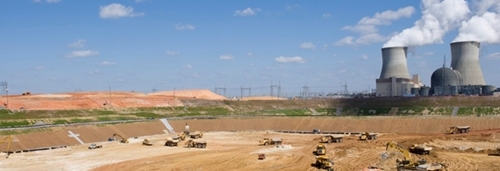
 Vail Town Council to weigh new plan to redevelop T...
Vail Town Council to weigh new plan to redevelop T... 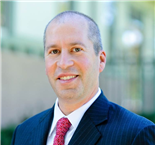 All about indexes
All about indexes 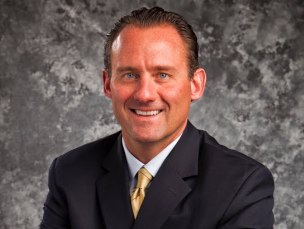 Transforming your social security into a winning r...
Transforming your social security into a winning r... 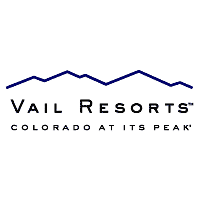 Pass sales, real estate transactions, revenues inc...
Pass sales, real estate transactions, revenues inc... 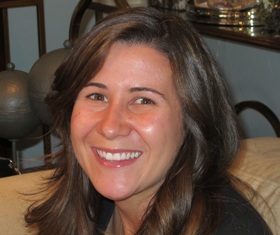 Vail Valley native with passion for Biophilic inte...
Vail Valley native with passion for Biophilic inte...  Beaver Creek starts work on new summer activities
Beaver Creek starts work on new summer activities  Land Trust, ECO Trails, Vail Resorts team up to cl...
Land Trust, ECO Trails, Vail Resorts team up to cl...  EUROVISION named Host Broadcaster for 2015 World A...
EUROVISION named Host Broadcaster for 2015 World A...  Vail Resorts brings back Lindsey Vonn's 'School of...
Vail Resorts brings back Lindsey Vonn's 'School of...  Hundreds turn out for 2015 World Championships vol...
Hundreds turn out for 2015 World Championships vol...  Eagle County Senior Health Expo and 9th Annual Hea...
Eagle County Senior Health Expo and 9th Annual Hea...  Final race of Vail Mountain Trail Running Series s...
Final race of Vail Mountain Trail Running Series s...  Before you write your will ...
Before you write your will ... 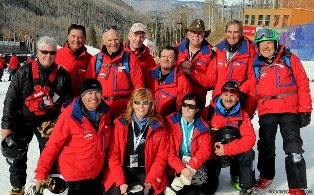 2015 World Ski Championships volunteer recruitment...
2015 World Ski Championships volunteer recruitment... 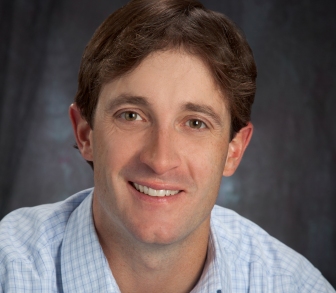 Ascent Sotheby’s International Realty in Vail an...
Ascent Sotheby’s International Realty in Vail an...  CDOT outlines road closures for local stages of US...
CDOT outlines road closures for local stages of US...  Italian artist creates unique trophies for Vail, B...
Italian artist creates unique trophies for Vail, B...  Vail Recreation District once again hosting Jake W...
Vail Recreation District once again hosting Jake W... 

